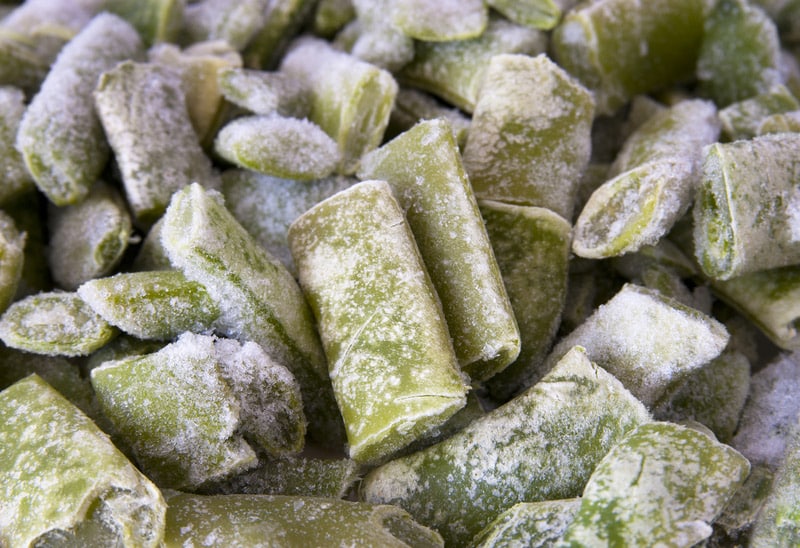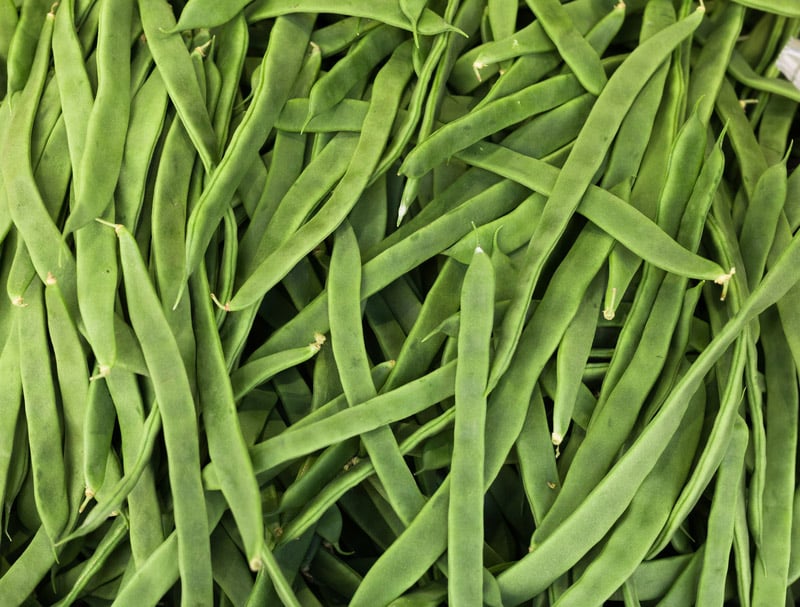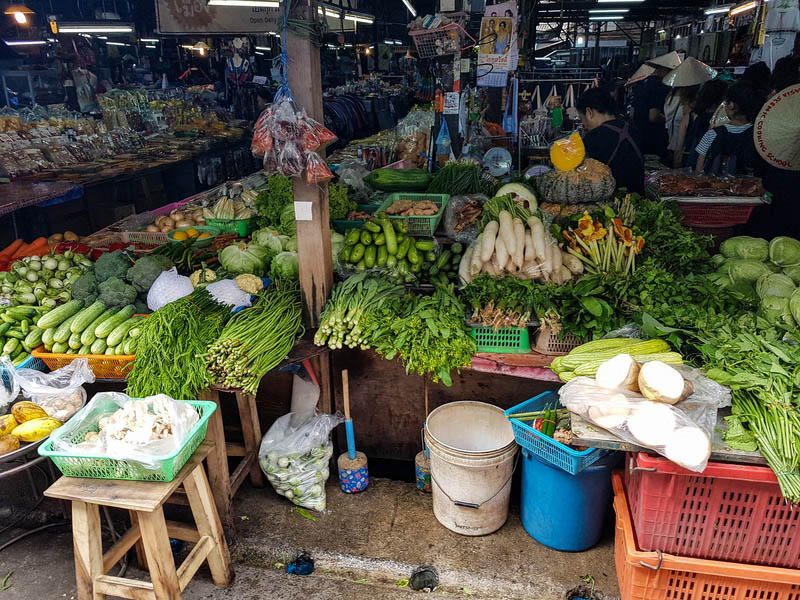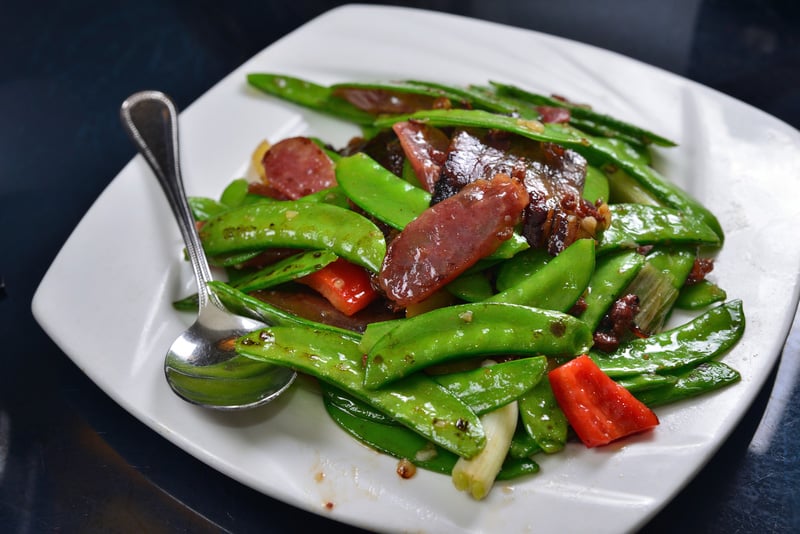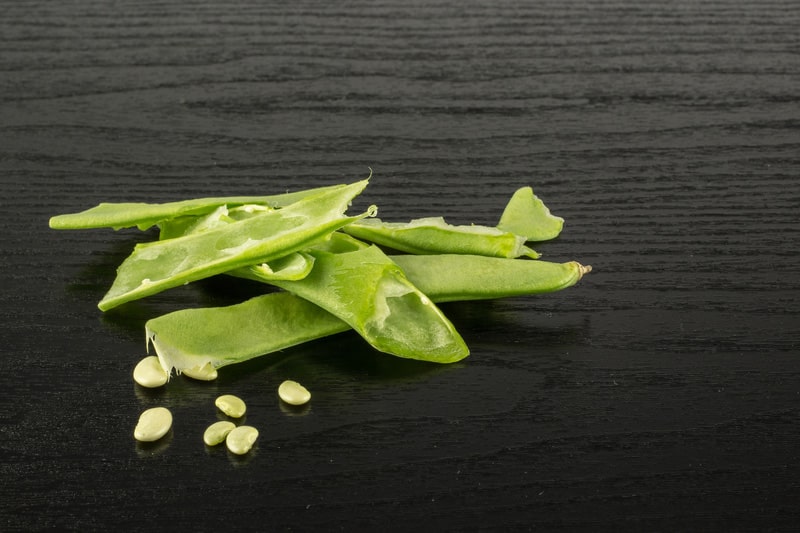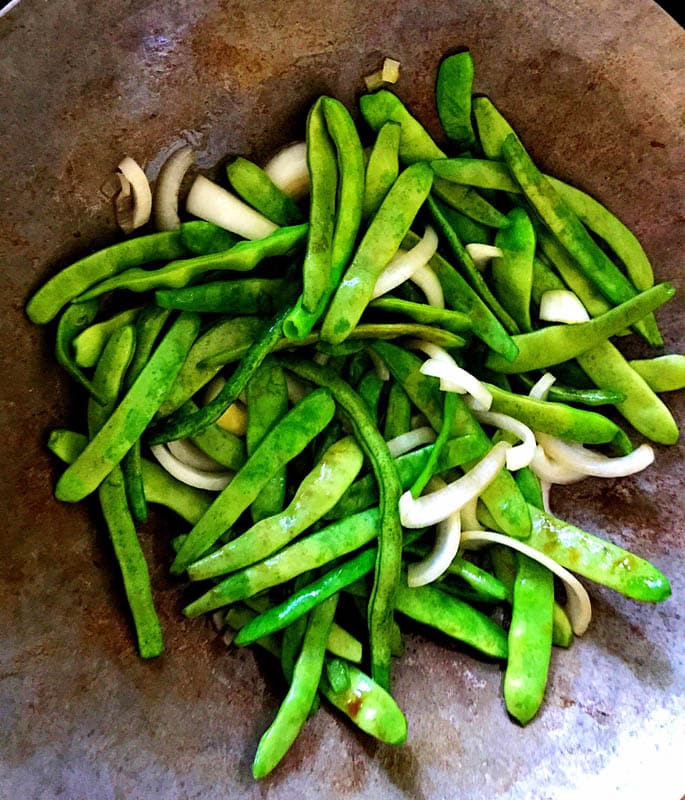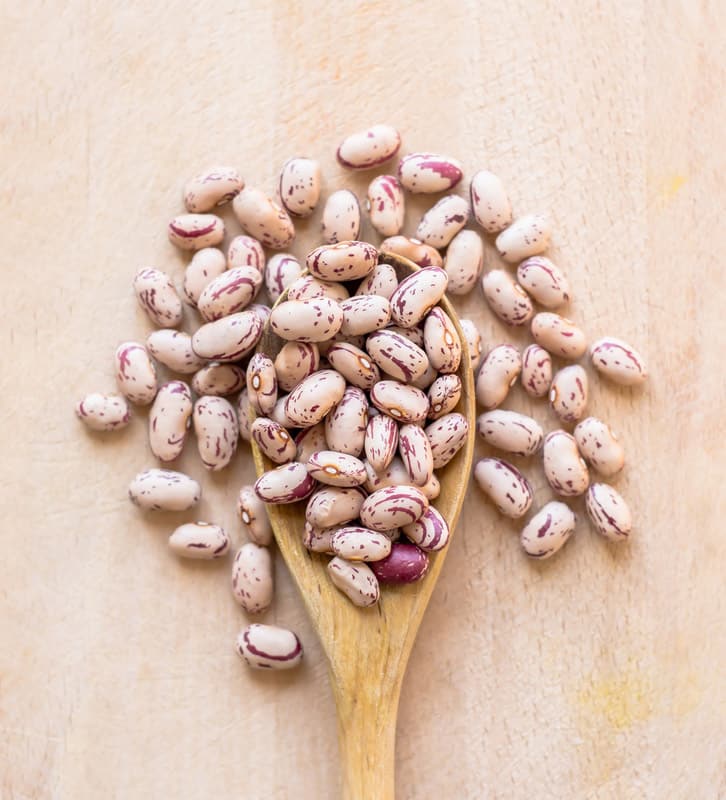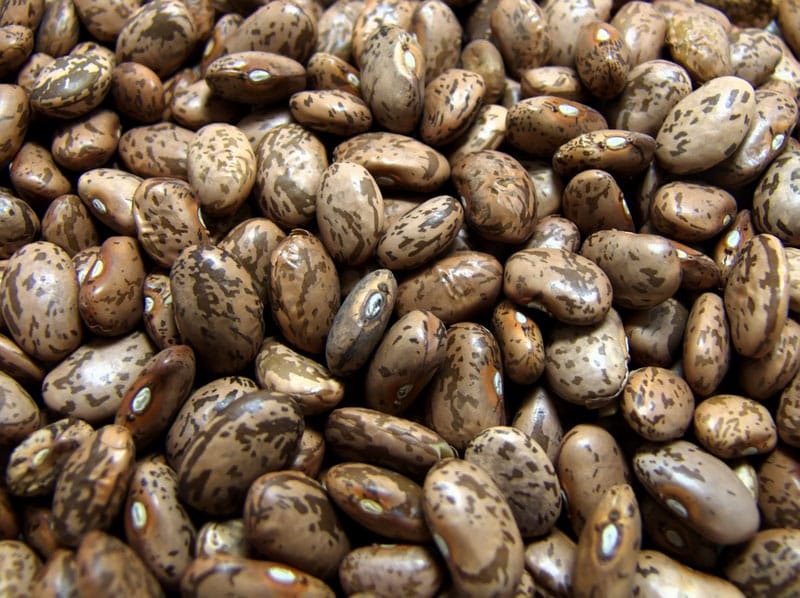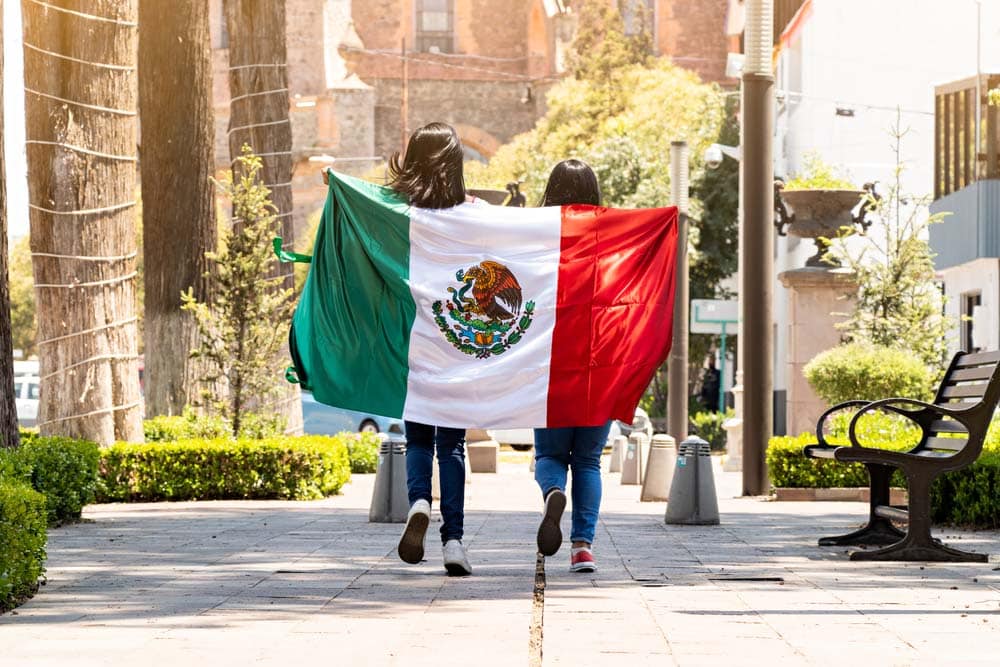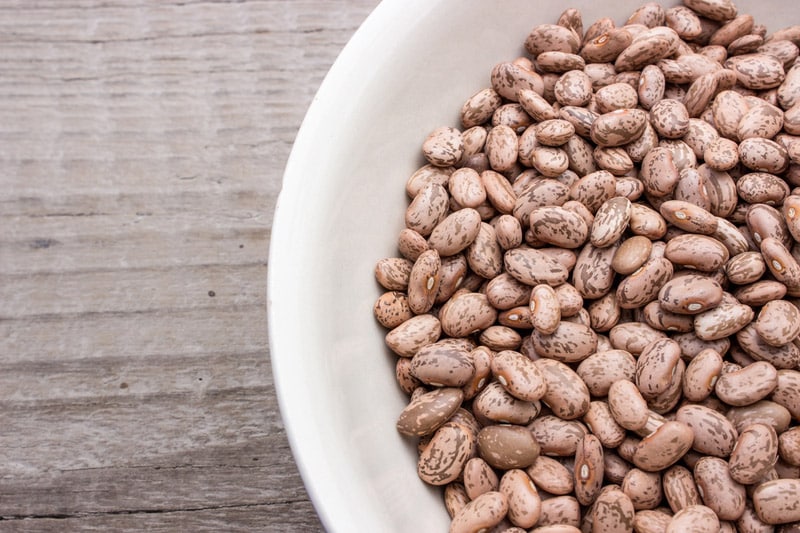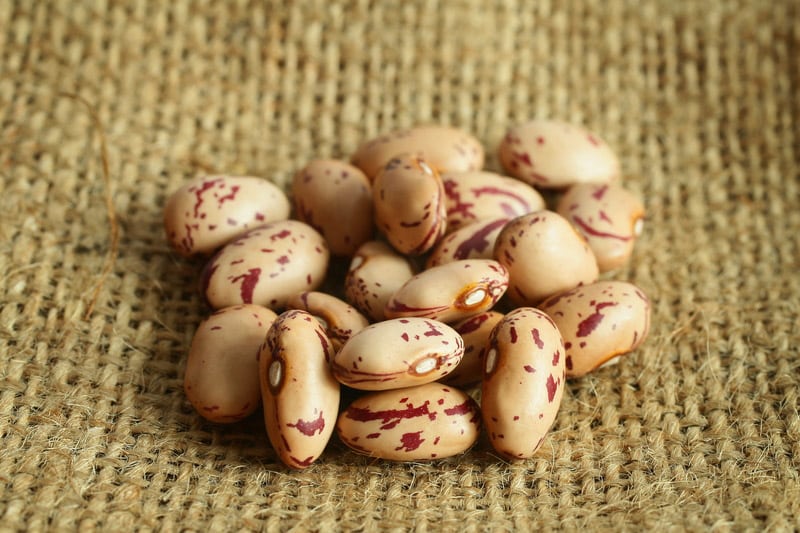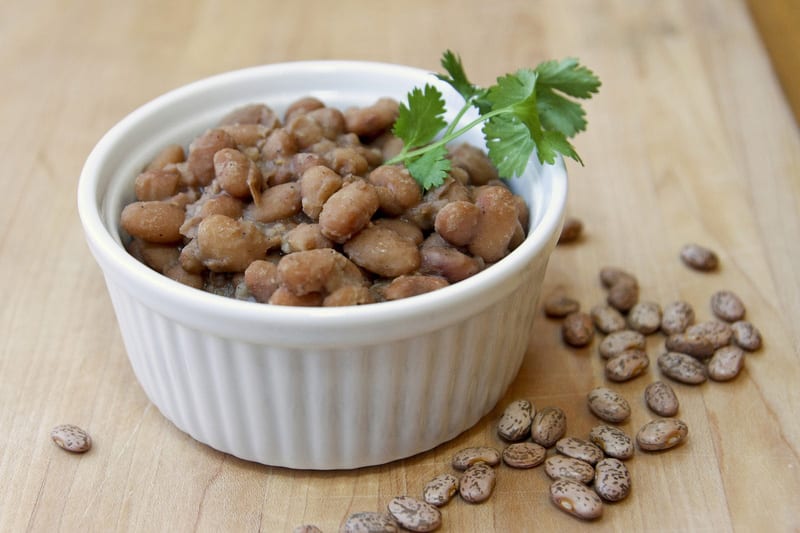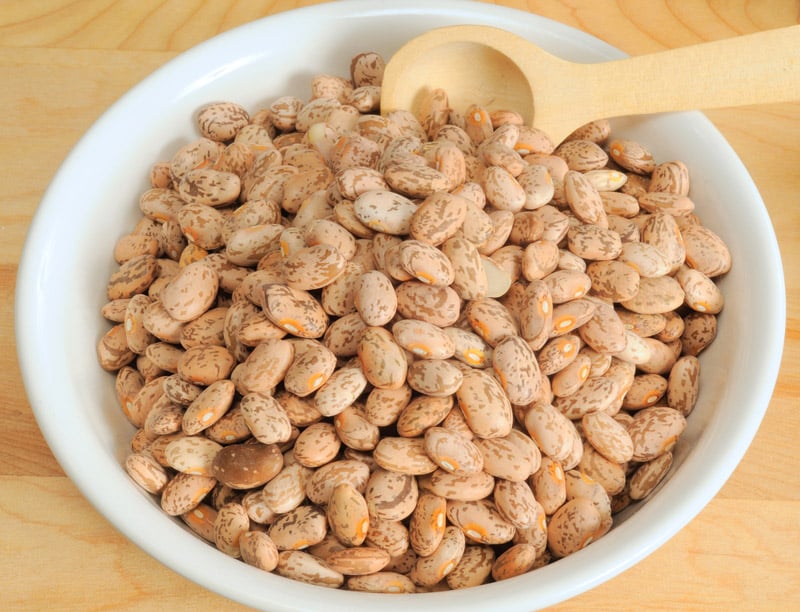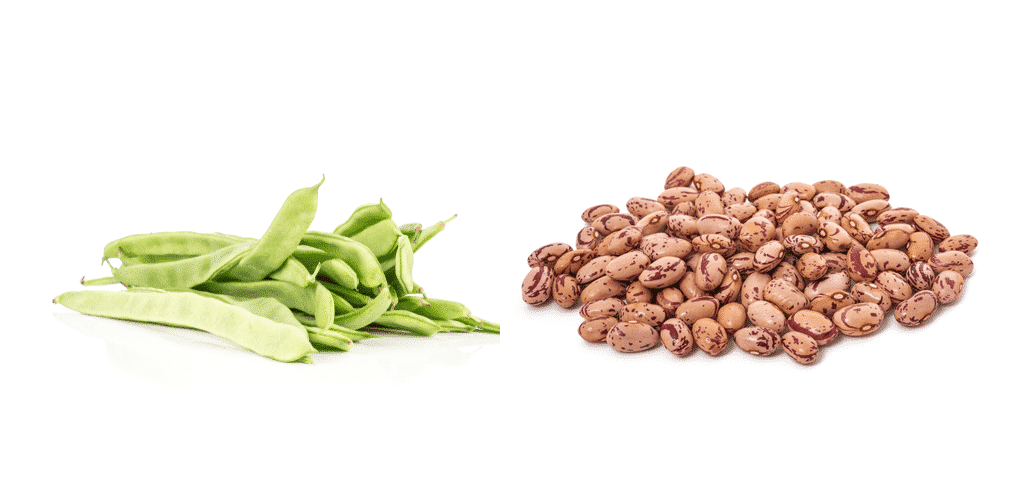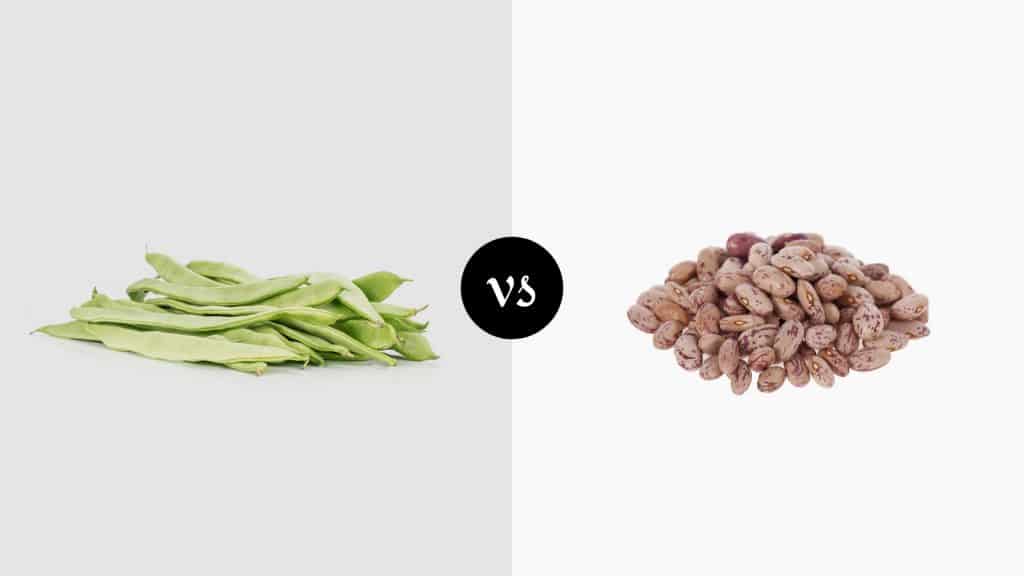
There aren’t as many people paying attention to including beans in their diet as there should be given the immense nutritive benefits. It is highly recommended for people with heart disease and is an excellent sustainable source of protein.
In most cases, beans need boiling for at least ten minutes to eliminate an indigestible protein. Green beans and snap peas cook within minutes and are great raw.
However, when it comes to Romano beans vs. Pinto beans, you’re looking at two very different types of ingredients, and we’ve got everything you need to know coming up in our comparison.
Romano Beans Vs. Pinto Beans Comparison
| Romano Beans | Pinto Beans | |
|---|---|---|
| Names | Phaseolus Coccineus - Romano Beans, Italian String Beans, Italian Pole Beans, Italian Snap Peas, Helda Beans, Sam Fhali | Phaseolus Vulgaris Pinto Group - Pinto Beans, Light Speckled Kidney Beans, Strawberry Bean, Poroto Frutilla, Frijol Pino |
| Varieties | Roma, Greencrop, Bush Romano - Fresh, Frozen & Canned | Pinto Bean, Burke, Maverick, Alvese, Othello, Kodiak, Alaaveso, Siera, Hidatsa, Buster |
| Origin | Italy | Mexico, 1800s - Food Agricultural Engineer Manrique R. Gonzalez Bred New Mexico Pinto Bean | Wild Pinto Bean - Mexico, 20,000 Years+ |
| Shape | Green Flat Wide Pods Housing Edible White Seeds, Akin To Broad Snap Peas, Long And Green | Ovalesque And Slightly Smaller Than Kidney Beans Although Almost Identical In Shape |
| Size | 5-8 Inches Long Pod | Small Round Beans Similar In Size But Slightly Smaller Than Kidney Beans |
| Color | Bright Green Pod With OffWhite Seeds | Cream To Light Brown With Pink, Brown Or Deep Reddish Speckles |
| Flavor | Earthy, Fresh Nutty Flavor Similar To Snap Peas But With Sweeter, Greener Flavor | Rich, Nutty And Savory With Meaty Beany Taste And Tanginess |
| Texture | Similar Texture To Snap Peas But Crunchier And More Substantial, Creamy Bean-Like Seed Texture | Creamy, Wholesome, Firm With Slight Grainines |
| Availability | USA, Mexico - Summer (March - November) | Global Availability, All Year Around |
| Uses | Raw Or Cooked, All-Purpose Versatility | Pre-Soaking Required, Once Soaked All-Purpose versatility |
| Serving Suggestion | Stewed, Braised, Bean Salad - Serve Over Grains, Corn, Rice or With Salad As Picked Side-Dish | Refried Beans | Bean Saute, Stew Or Refried Beans Served With Ham Or Ham Hock, Alternatively, Green Salad, Coleslaw, Cooked Spinach, Collard Greens, Green Cruciferous Vegetables |
| Affordability | $6.5/Pound Variable Average When Buying In Bulk | $0.75-$1/Pound |
| Interchangeability | Interchangeable With Pinto For Protein Value Not Flavor And Texture | Limited Interchangeability, Depends On Texture & Flavor Desired |
Romano Beans Vs. Pinto Beans
Our comparison of Romano beans vs. Pinto beans provides everything that you need to know about these two brilliant ingredients. They’re not just excellent sources of nutrition but outstanding individual flavor as well. Let’s take a closer look.
Romano Beans
It is highly recommended by other foodies across the world that you try Romano beans at least once. One thing to look for while buying these beans is that there are not many soft spots on them. Ideally, Romano beans are supposed to be crunchy and not soft.
Now, let’s move ahead to the individual characteristics of this tasty top pick.
Names
Romano beans are commonly known as Italian string beans. You’ll also find them referred to as Italian flat beans, Italian pole beans, Italian snap peas, and helda beans. In India, the same species of green bean is grown and is known as sem fhali.
The scientific term for Romano is Phaseolus coccineus.
Varieties
There are three varieties of Romano beans native to Italy, namely Roma, Greencrop, and Bush Romano. While fresh beans are largely preferred, frozen and canned Italian beans are also available.
Origin
The Romano variety of flat beans originated in Italy.
Shape
You’ll find harvested Romano beans as wide flat green pods with larger than normal breadth that houses edible round pods with white seeds. They look like large, fat snap peas.
Romano beans are not round like pinto beans but rather long and become stringy if harvested too late.
Size
Each Romano bean pod measures between 5 and 7 inches in length while carrying a bread of roughly an eighth of an inch or thinner.
Color
As a flat snap pole bean, Romano comes in bright green pods. While not conventionally husked, once shelled, each bean houses offwhite seeds.
Flavor
Romano beans taste earthy and fresh with a nutty quality to their aftertaste, just like conventional varieties of pole beans. However, they’re far sweeter, which makes their “green” quality taste lighter and fresher by comparison.
Texture
The texture of Romano beans is very similar to standard snap peas, just crunchier and more substantial. There’s very little similarity between the texture of pinto beans and Italian flat beans.
Only the inner seeds of Italian beans carry the same squishy but firm beany wholeness of pinto beans.
Availability
Each summer, Romano beans are available in abundance around America. This makes them available in the US between March and November. You can buy them from your local farmer’s market.
Uses
Raw or cooked, Romano beans are amazing. A lot of delicious recipes can be made using these beans. They are fantastic when fried, sauteed, or braised and you can have them with salads or make sauces with them. They are very effective in increasing the metabolism rate.
There are hundreds of string bean dishes to choose from, and each one is quite easy to make.
Serving Suggestion
Stewing, braising, and bean salads arise as the most popular serving suggestions for this must-try Italian vegetable. Try serving stewed or braised beans over grains like bulgur, farro, couscous, or even a bed of corn and rice for an unforgettable flavor and texture.
Romano salads can start as simple as beans briefly pickled in good quality white wine vinegar. It doesn’t take much to bring out their natural flavor.
Affordability
As is true with all fresh fruits and vegetables, buying Romano beans in bulk grants considerable savings. The price comes down to as low as around $0.35 per ounce or $6.50 per pound when buying 20 pounds or above, in most cases and in the majority of regions.
Interchangeability
Now the big question which most people ask is whether or not Romano beans are interchangeable with Pinto beans in a given dish. The answer is “Yes” if you do not have a particularly sensitive palate. The difference between them is not so vast that it makes your recipe taste different.
So, if you are not a picky eater, go ahead and substitute Romano beans with Pinto beans. Both these beans are equally delicious and provide that nutty and earthy flavor to your dish.
Pinto Beans
Pinto beans are the beans of choice for most people because of how easy it is to cook them. They are widely available around the world and are a wonderfully versatile legumes. Let’s take a closer look at these global favorites.
Names
Other than the individual varieties, Pinto beans are known by many names but belong to the Phaseolus vulgaris Pinto Group. The most common alternative term is lightly speckled kidney beans.
Across South America, they’re called a name that means strawberry bean due to their coloring. Look for ‘poroto frutilla’ as previously described, or ‘frijol pino,’ which translates to ‘painted bean.’
Varieties
There are numerous varieties of Pinto beans commonly sold commercially. A few include Burke, Maverick, Alvese, Othello, Kodiak, Alaaveso, Siera, Hidatsa, and Buster, all sharing a similar appearance, flavor, and texture.
Origin
Pinto beans are of Mexican origin. The Pinto bean was an invention of a pioneering agricultural engineer by the name of Manrique R. Gonzalez just after the first World War.
Mr. Gonzalez cultivated a variety of beans native to Mexico and, after much genetic experimentation, found the color, shape, texture, and sized genus that we know as the New Mexico Pinto bean grown in California today.
His revolutionary work in the breeding of beans was undertaken during the mid 19th century. Wild Pinto beans have been growing in South America for over 20,000 years.
Shape
Pinto beans are ovalesque and slightly smaller than kidney beans.
Size
These beans are rounder in shape as compared to Romano beans and smaller in size. They’re small round beans, not snap pea pods.
Color
Pinto beans are predominately cream to light brown colored with pink, brown, or deep reddish-brown speckles.
Flavor
The flavor of pinto beans is rich, nutty, and far more savory than Romano beans with a meaty, beany taste and slight tang that’s unmistakable.
Texture
Just like the inner pods of Romano beans, pinto beans also have a creamy texture. They’re firm with thin edible skin that doesn’t need to be removed prior to cooking. Expect firmness and grainy texture that’s on par with kidney beans.
Availability
Although only grown in select regions of the world like Mexico, New Mexico, and regions across California, pinto beans offer global availability. Surges in demand combined with drought are known to cause shortages in its native country of origin from time to time.
Uses
Unlike Romano beans, you have to soak pinto beans overnight before working with them. Soaking pinto beans overnight makes them taste better but is not necessary. If you want a quick snack, then you can most definitely use them without having to pre-soak them the night before.
Serving Suggestion
Pinto beans are the most used bean type in refried beans. They’re also frequently served with ham or ham hocks, as well as cornbread.
Vegans are known to enjoy cooked, seasoned pinto beans or refried beans aside from a green salad, coleslaw, or with cooked spinach, collard greens, and other varieties of green cruciferous veg like Swiss chard.
Affordability
Dry Pinto beans retail for between $0.75 and $1 per pound. The average 15 ounce can of standard quality Pinto beans sells for approximately $0.70 to $1.
Interchangeability
The intensity of flavor of Pinto beans is greater than Romano, which means that if you can’t get your hands-on Romano, Pinto is a suitable substitute depending on what you’re cooking.
If your meal isn’t a stew, curry, soup, braised dish, roasted meal, or another recipe whereby everything is cooked together, and the stringy nature of Romano isn’t featured prominently, then Pinto will be a suitable alternative.
Which Is Better, Romano Beans Vs. Pinto Beans?
The better bean between Romano beans vs. Pinto beans depends on what you’re cooking and the flavor profile desired. Despite being described as a bean, keep in mind romano beans are green beans, not legumes.
As a result, they’re best served alone or in a dish that leaves their delicate flavor to remain boldly instead of masking it with a medley of savory or herbaceous boldness. If you’re cooking up Mexican food, a curry, or feel like a hearty stew or wholesome salad, Pinto beans will serve you well.

